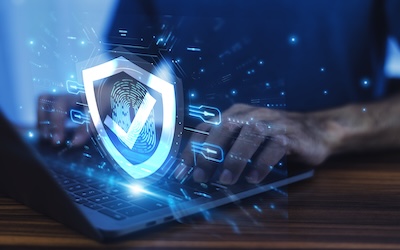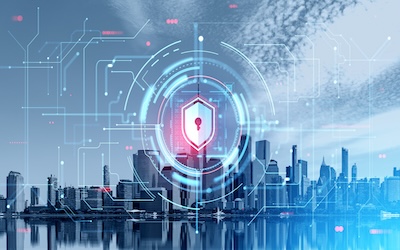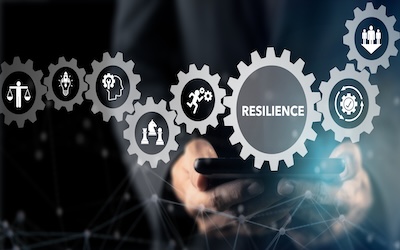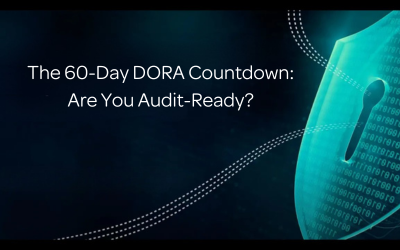You don’t need to imagine the scenario we are about to describe to you, as this is already happening. However, imagine trying to refuel your car, book a flight, or even do your weekly grocery shop, and nothing works. Systems are down. Payment terminals fail. Flight bookings vanish into cyber space. It sounds like a dystopian nightmare, but recent attacks on retailers, airlines, and car manufacturers like Jaguar Land Rover have shown that this is not fiction, it’s reality. Cyber security isn’t just an IT problem anymore; it’s a threat to our routines, our jobs, and the way we live.
Take the Jaguar Land Rover attack, for example. Production lines were halted, vehicles weren’t delivered, and suppliers scrambled to adjust. Millions of customers were indirectly affected. Similarly, airline IT outages have left passengers stranded at airports, with flights delayed or cancelled. And in the retail sector, point-of-sale system failures during busy shopping periods prevent people from buying essentials, creating immediate frustration and long-term operational headaches. These incidents aren’t isolated; they illustrate a bigger problem: our society is increasingly dependent on digital infrastructure, and that infrastructure is vulnerable.
When these systems fail, the consequences ripple far beyond the initial breach. Retail outages leave people unable to buy groceries or medicine. Airline disruptions ripple across logistics and tourism. Manufacturing slowdowns affect supply chains, jobs, and downstream businesses. Healthcare systems, utilities, and transportation networks are equally at risk, where even small disruptions can cascade into major crises. Cyber attacks aren’t just technical inconveniences, they are societal stressors. And these stressors not only impact the companies involved, with severe reputational damage and loss of revenue, but they affect our very way of life.
Yet, the response from governments remains largely reactive. Often, action comes only after the damage has been done, a financial bailout here, a public statement there. There is little evidence of proactive, coordinated measures to prevent these disruptions before they reach our daily lives. The truth is stark: the threat is systemic, and our current approach leaves critical services exposed.
So, what should be happening? Governments and industry leaders need to take decisive, proactive steps:
- Convene Leading Experts: Bring together top cyber security minds across sectors to create unified strategies.
- Mandate Continuous Monitoring: Require organisations to have real-time oversight of critical systems, rather than relying on periodic audits.
- Strengthen Supply Chain Security: Ensure that third-party vendors don’t become weak links in essential services.
- Incident Response Preparedness: Every critical organisation should have tested playbooks and rapid communication protocols.
- Promote Data Collaboration: Threat intelligence should be shared across industries to prevent attacks from spreading unchecked.
These aren’t radical ideas – they’re essential. Cyber threats evolve faster than regulations, and even minor breaches can snowball into nationwide disruptions if left undetected.
Why Continuous Monitoring Is Now the Must-Have
Continuous monitoring and oversight are vital. Keeping systems under constant watch allows anomalies to be spotted before they escalate. This isn’t paranoia, it’s preparedness. By connecting multiple data sources, IT systems, operational technology, and third-party feeds, organisations can identify vulnerabilities and act before they become crises.
Consider a major retailer: without constant monitoring, a ransomware attack could freeze payment systems across the country, leaving millions unable to shop. With real-time oversight, such threats can be detected immediately, mitigation steps can be implemented, and widespread disruption can be avoided. The principle is simple: detect early, respond quickly, and maintain resilience.
The human side of these disruptions is often overlooked. Employees suddenly unable to do their jobs, customers inconvenienced or stranded, and families impacted by delayed deliveries or cancelled flights—these are tangible consequences of weak cyber security. It’s a reminder that digital systems aren’t abstract—they’re the backbone of modern life.
Cyber attacks are not a distant threat—they are happening now, and they are affecting our daily routines. Governments must shift from reactive responses to proactive strategies, and organisations need robust tools to safeguard critical infrastructure. Preparedness isn’t just about technology; it’s about understanding risk, connecting the dots across systems, and ensuring that essential services keep running, no matter what.
Our routines, our economy, and even our sense of normalcy depend on it. The question is not if another attack will happen, but when and how ready we will be when it does.
To learn more about CCM click here.




















